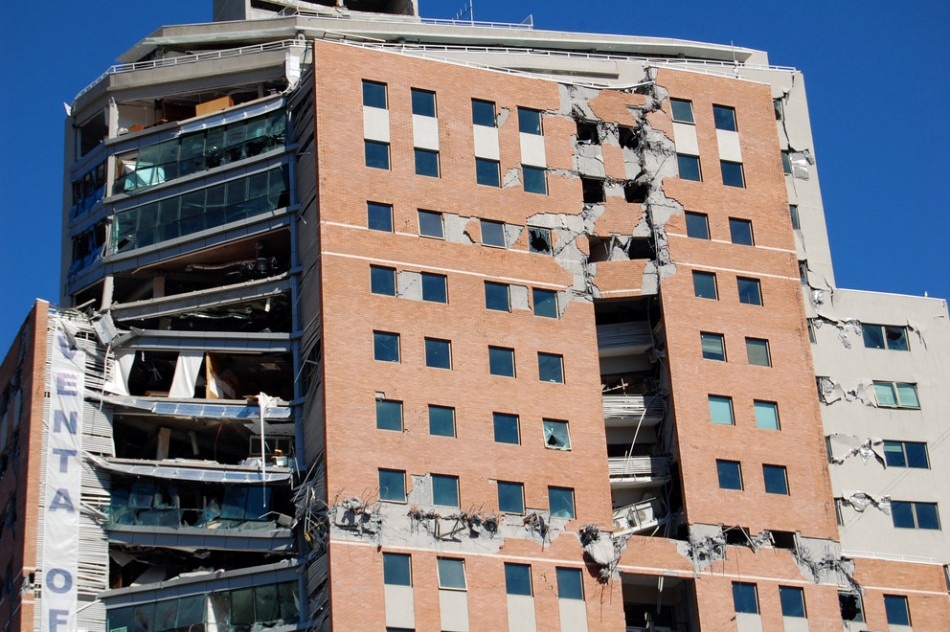Jun 21 2017
Annually, earthquakes and explosions damage numerous structures around the world, destroying many lives in their wake. Thanks to a $50,000 Multidisciplinary Research Seed Grant provided by the College of Engineering, Researchers at Penn State are investigating a totally new way of protecting key infrastructure.
 Damage done to an office building by a 2010 earthquake in Concepción, Chile. (Image: Penn State)
Damage done to an office building by a 2010 earthquake in Concepción, Chile. (Image: Penn State)
The goal of the project is to protect critical structures. The structural design for earthquakes now requires the whole building to shake, which you can design for, but it's quite an expensive proposition. Our idea is that if you can dissipate the earthquake before it gets to the structure, then you don't have to design it to resist that ground motion.
Cliff Lissenden, Professor of Engineering Science and Mechanics
Parisa Shokouhi, Chief Investigator on the project and Associate Professor of Civil Engineering, and Lissenden will use a mixture of experimental and numerical study to assess the efficiency of a recommended metamaterial in filtering, dissipating and preventing surface waves caused by natural and man-made sources.
“What we are developing right now is a very simple model,” said Shokouhi. “We are considering a plate with rods that would act as local resonators, and we are looking into what combination and what geometry of rods will dissipate the incoming energy that is traveling through the plane.”
The main step in their project, numerical research, will concentrate on discovering the suitable size and arrangement of holes and their key elements. The Researchers will do that by performing 3D and 2D finite element modeling and simulations. The model parameters will be methodically changed until they can attain the most desired arrangement.
Based on the result of the numerical study, the team will then construct and analyze a small-scale simplified model using the suggested formation. They will analyze a small aluminum plate with punched holes and steel rods to mimic the resonating units. A shaker or stack of piezo elements mounted on the plate will act as the stimulus. The wave field across the plate will then be documented.
Then, the team will reproduce a scaled-down version of a life-size setup using a soil-filled box on a shake table. The holes will be drilled in the compacted soil and the wooden or steel rods will be inserted. This will allow the team to examine the effects of soil heterogeneity, nonlinear and non-elastic behavior, and water saturation on the performance of the metamaterial.
If the outcomes are promising, this research could result in an important change in the way Engineers design structures to deal with the damaging effects of explosions and earthquakes.
I think there is a lot of potential, but we are trying to investigate the phenomenon from the bottom up to really understand what's going on. We want to know exactly how these resonators stop these waves, so that we can design them effectively.
Parisa Shokouhi, Chief Investigator on the project and Associate Professor of Civil Engineering
Set-up in 2014, the Multidisciplinary Research Seed Grant program aims to assist the faculty attract high-impact multidisciplinary and center-level research funding from the federal and state government, foundations or industry. This one-year project will conclude in January 2018.